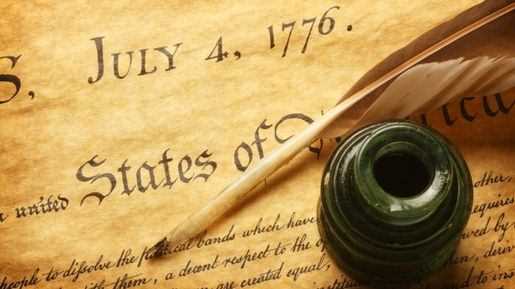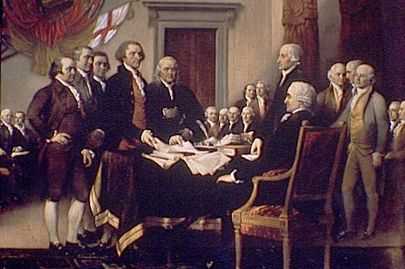In 1776, a resolution we know today as the 'Declaration of Independence' was drafted by working committee known as the 'Committee of Five,' forwarded on June 28 to the Continental Congress as a whole for debate and approval on July 2nd, then signed by John Hancock as the Congress' presiding officer on July 4 in the Assembly Room of the Pennsylvania Provincial State House.

The Second Continental Congress convened in Philadelphia on May 10, 1775. This time it met in the Pennsylvania State House, or Independence Hall, as it is now called. It was in this building that the Declaration of Independence was signed.
There have been various alterations of the State House through the years. When the British occupied Philadelphia in 1777-1778, they damaged the State House by converting the first floor into a barracks and making the second floor into a hospital for wounded American prisoners. The old steeple had rotted and become so weak that it was taken down in 1781. A new one was built in 1828. Congress Hall was begun in 1787 and finished in 1789. The City Hall building was begun in 1789 and finished in 1791. These two halls formed part of the complex of which the State House was a part. From 1802 until 1828 Charles Wilson Peale used the Assembly Room and second floor of the State House for a museum and portrait gallery.

The main building had a decked gable roof, balustraded between the chimneys and surmounted by a centrally located cupola.... The first floor contained two chambers about 40 feet square, separated by a spacious center hall about 20 feet wide.... The State House was not elegantly furnished. Chairs, tables, curtains, screens, and other items purchased for the building were never unduly expensive .... The building appears to have been heated originally by open fireplaces for which stoves were later substituted."